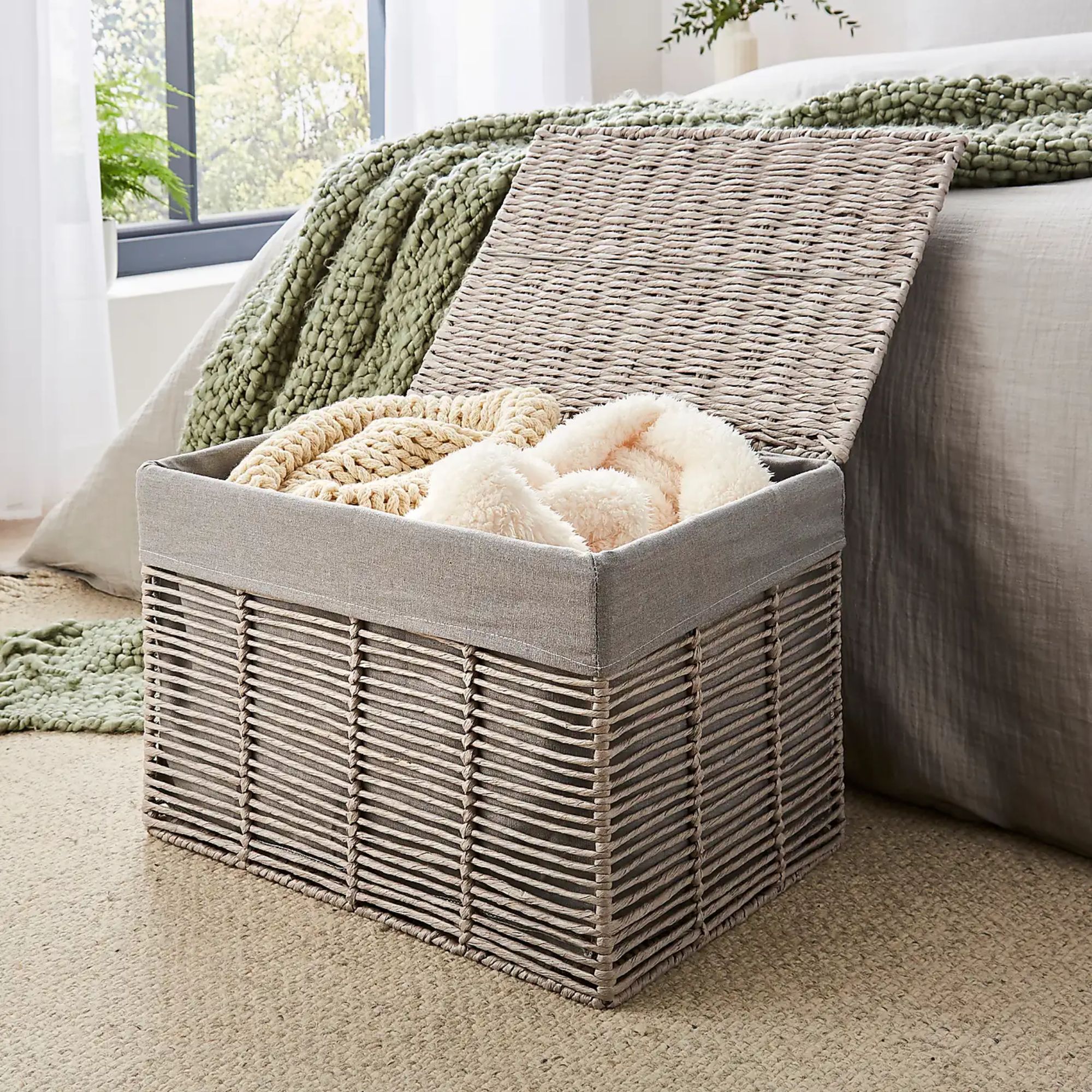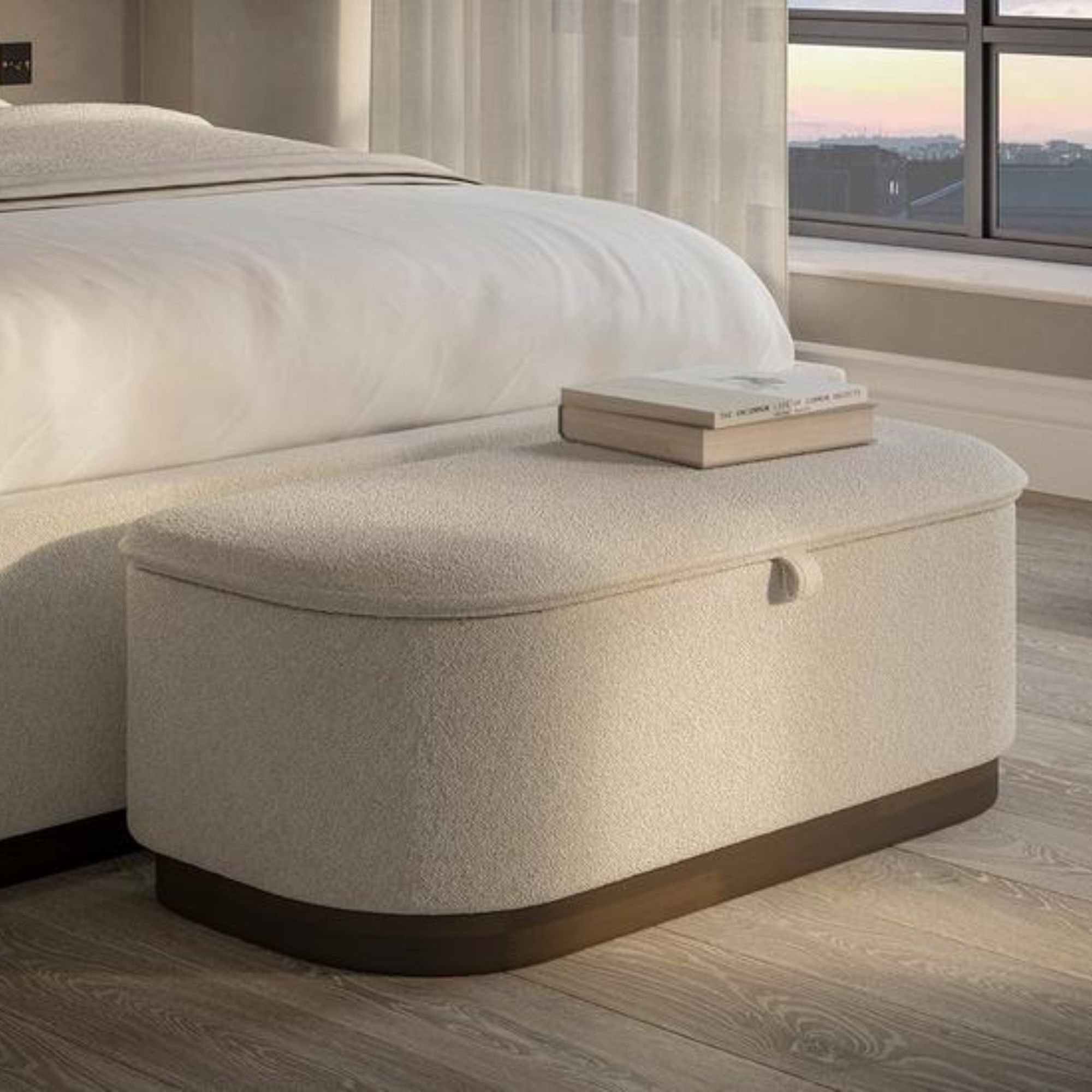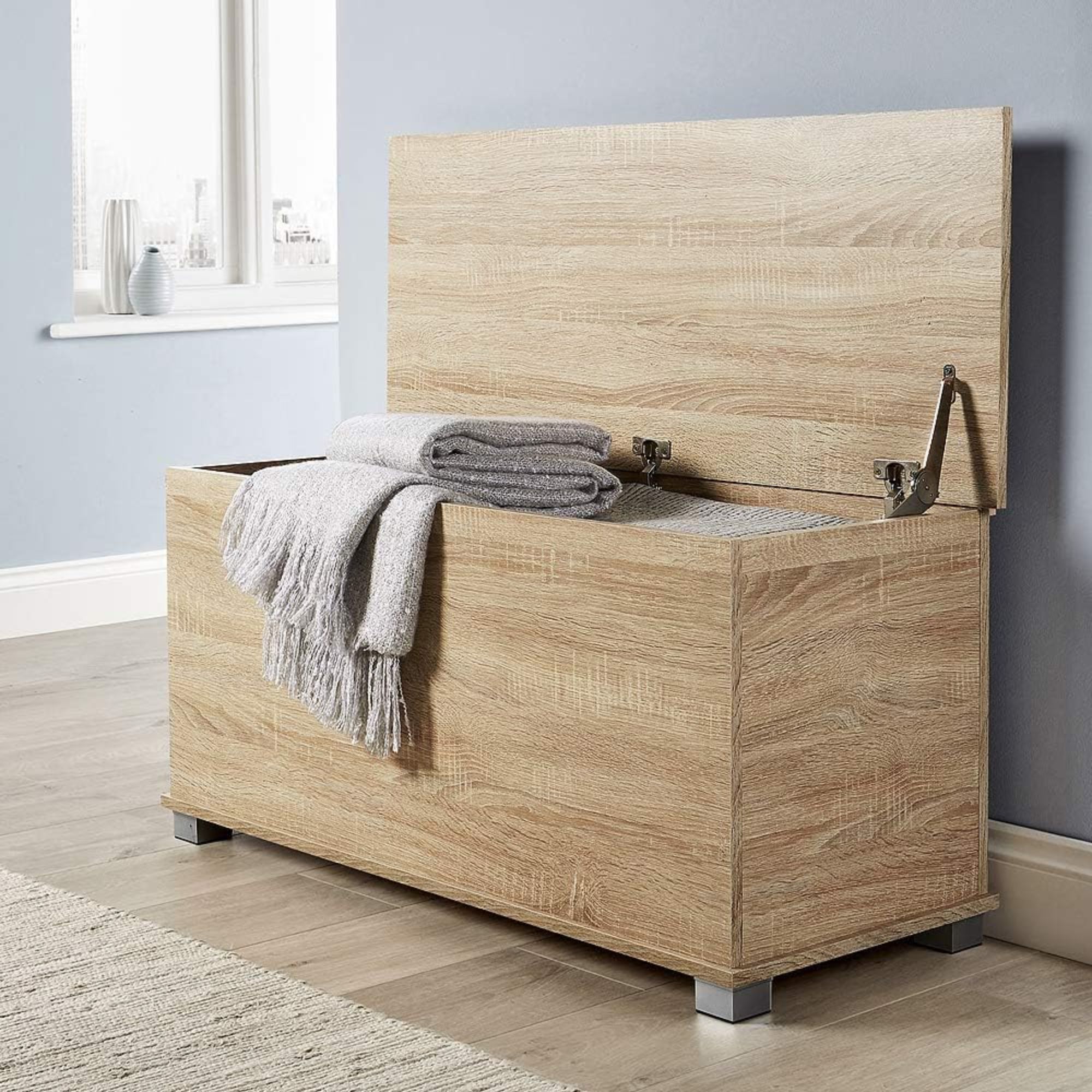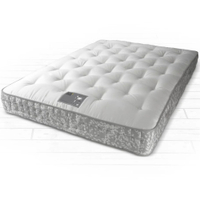How to arrange furniture in a bedroom (because configuration is key to a restful room)
Looking for a dreamy bedroom furniture set up? Look no further...
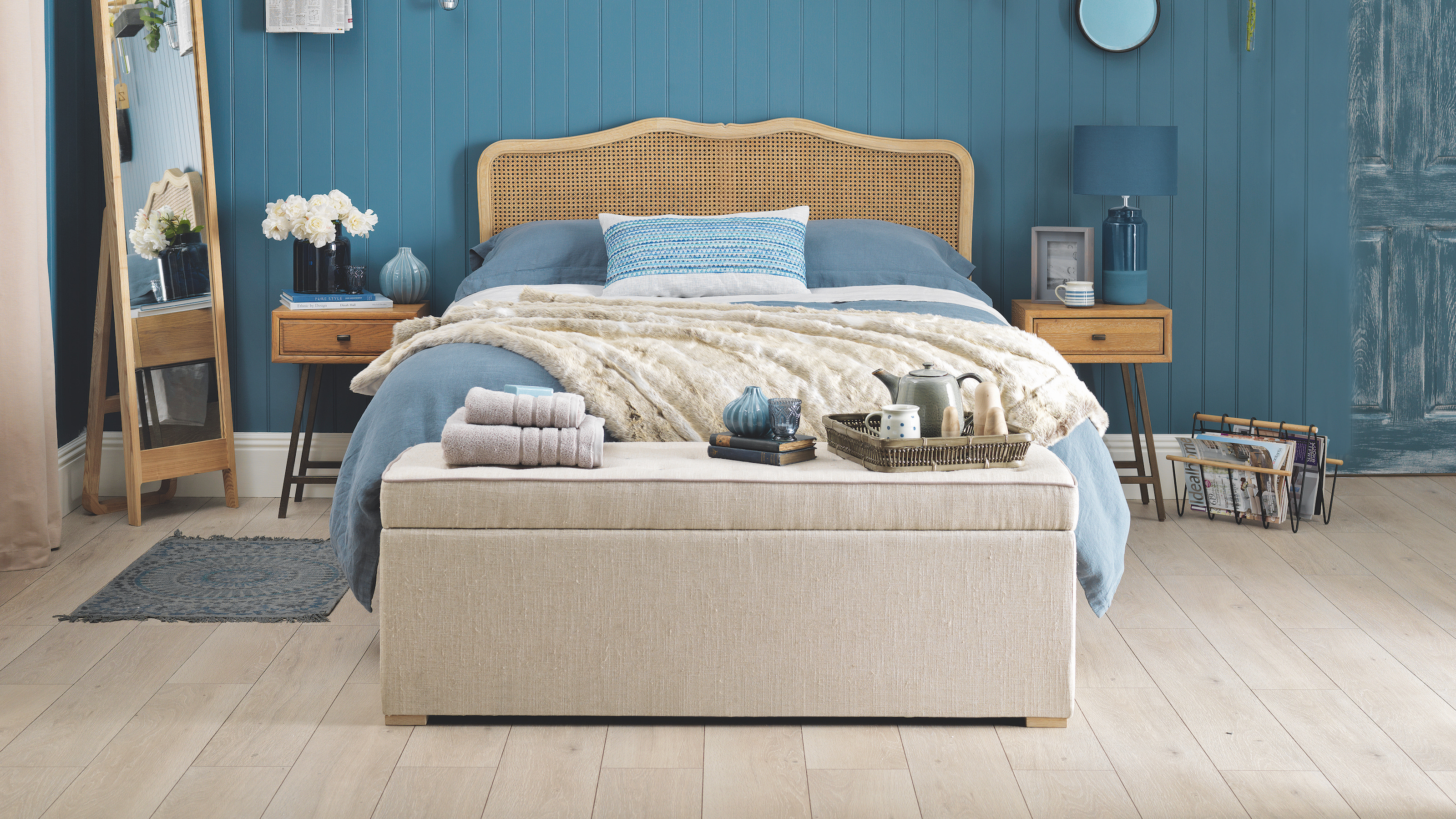
Kayleigh Dray
We all know, on some level, that the key to any successful room scheme is maximising space and natural light – but, when it comes to sussing out how to arrange furniture in a bedroom, there are plenty more things to consider. particularly if you want a good night's sleep.
That's right: while we understand you may worry what your bed's position says about you, a dash of pseudoscience is absolutely not worth sacrificing any of those bedroom ideas that promote rest and relaxation.
Why? Because, according to Mental Health UK, it’s recommended that adults up to the age of 64 need 7-9 hours of sleep per night. Their latest research, however, has shown that almost 1 in 5 people in the UK aren’t getting enough shut eye.
How to arrange furniture in a bedroom
Now, the reasons for our nation's collective sleeplessness are multitude: still, there's no denying that a cool, comfortable and uncluttered bedroom layout can help to reduce stress – which, in turn, may help you get your sleep schedule back on track.
'There are no hard and fast rules when arranging your bedroom furniture, but it is all about creating a flow and harmony within your space,' says Helen Ashmore, head of design at Laura Ashley.
With that in mind, then, here's how to arrange furniture in a bedroom for a truly dreamy night's sleep...
1. Measure the space
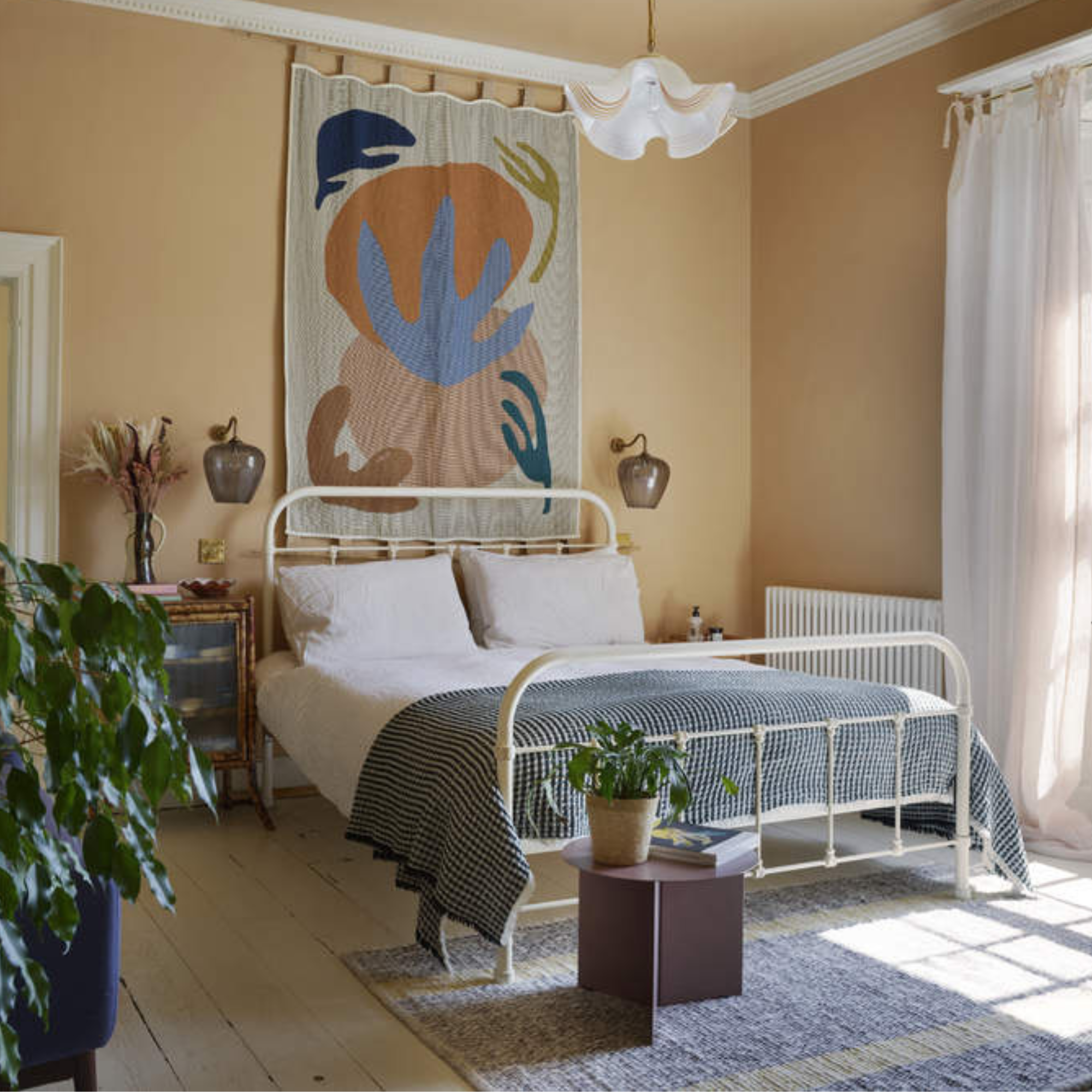
Before choosing furniture, and certainly before working out how to arrange furniture in a bedroom, you need to know exactly how big the room is, as this will impact whether you need to look into some small bedroom ideas or not
It is also important to note any alcoves or awkward corners (as these may be great for storage solutions), and it's useful to know the size of the doorway and the door opening too, as this can affect furniture placement.
Take some time, too, to work out which way the room faces (north, south, east or west). Then draw it out to scale on a piece of paper, so that you can plot where you'd like furniture and lighting to go and the maximum size it should be.
2. Work out where the largest items will go first

Once you've plotted the room out on paper, you can work out where you want the bed and wardrobes to go and the sizes that will suit.
Most interior designers agree that the bed in most master bedroom ideas should be placed against a wall rather than under a window – and Feng Shui principles suggest it's best if the head of your bed faces south and your feet aren't pointed towards the door.
Instead of worrying about what your bed position says about you, though, therapist Dr Kalanit Ben-Ari suggests that you focus on prioritising comfort.
'Some individuals may feel more relaxed when their bed is against a particular wall or facing a specific direction,' she says. 'Experimenting with different arrangements may help individuals find a configuration that feels most comfortable to them.'
Whatever you decide, try this tip: place newspaper on the floor to mark out where the bed, wardrobe and chest of drawers will go, as this should give you an idea of how the room will flow (or not), allowing you to adjust the sizes or spacing required.
3. Check there is space for doors to open
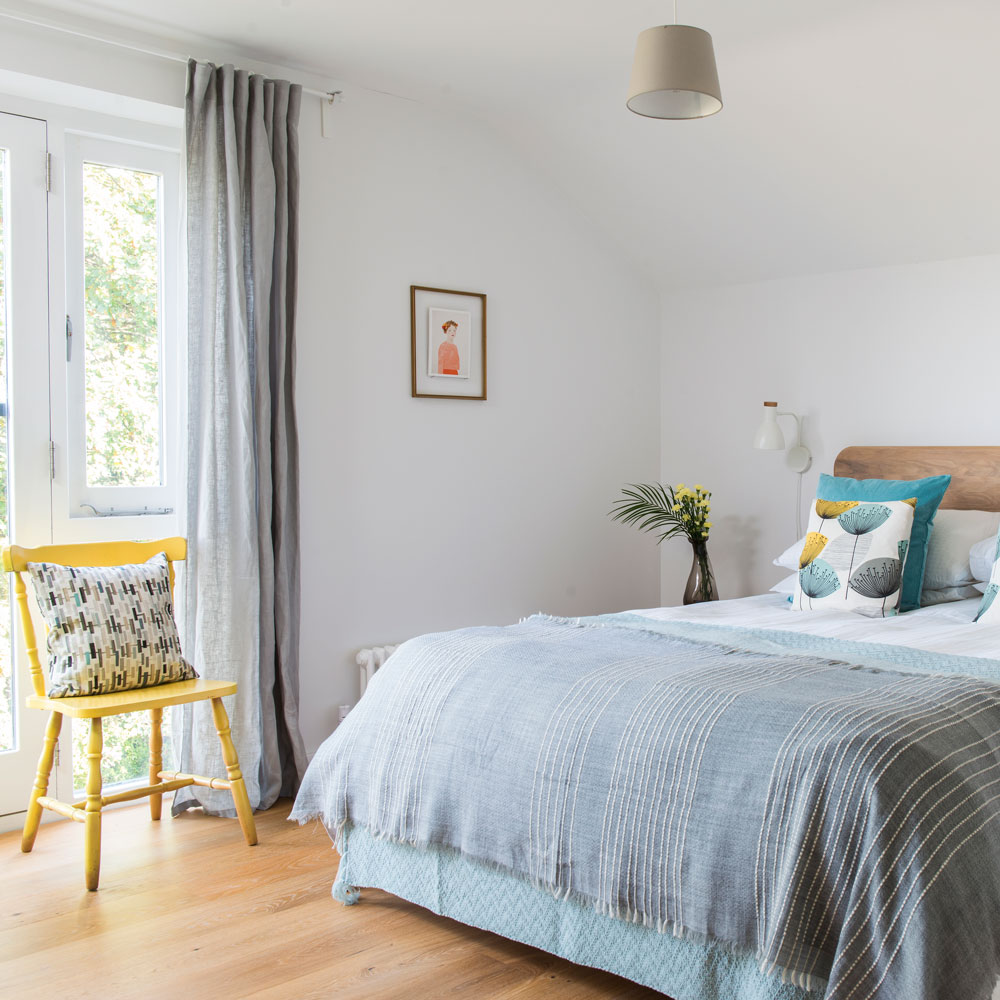
If you're opting for a bed with storage drawers underneath, check there is enough room to open them once the bedside cabinets are in place.
Also make sure that you will be able to open wardrobe doors, once other items like the bed or bedside cabinets are in place.
If you there isn't enough space to open doors or drawers, consider wall-hung bedside shelves or a ledge behind the bed instead. Wall lamps are another way to reduce the amount of surface space needed.
With fitted wardrobe ideas there is usually the option of sliding doors or curtains, and these are a good way to maximise space.
4. Work out what type of storage you need
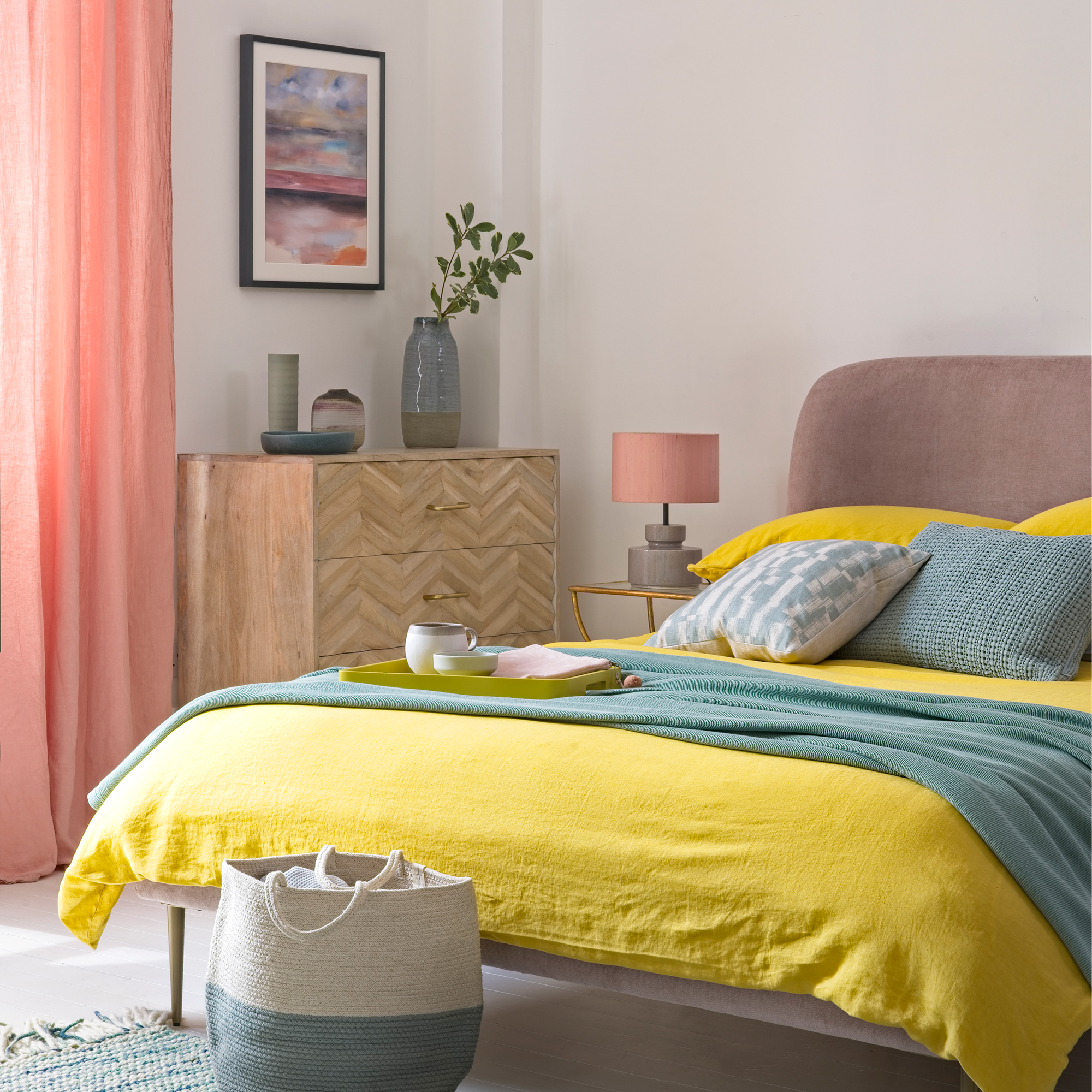
There's no point having tons of drawer space if most of your clothes need to be hung from rails. So look at what you wear and how it is best stored before investing in any bedroom storage ideas.
'Storage is essential in every home, therefore it’s important to utilise every inch that’s available, especially in the bedroom,' says Jonathan Clark, Creative Director for Shelved.
'By keeping bedroom storage units to one wall only, you are freeing up additional wall space for a large headboard, artwork, and other bedroom furniture – floor-to-ceiling units will also allow you to save valuable floor space by using vertical space instead.'
Jonathan goes on to suggest that you 'opt for a tall modular design with a slim profile to ensure you’re making the most of all the available wall space'.
'Open shelves will provide additional storage, allowing you to keep decorative items within reach whereas low-level cupboards are perfect for keeping your personal possessions neatly hidden away,' he says.
5. Opt for an ottoman
It's common practice for high-end designers and interior architects to count their client's shoes, bags and clothes before designing wardrobes.
It's worth, then, doing an audit of your own stuff before choosing and planning how to arrange furniture in a bedroom. And don't forget about storing bed linen, winter duvets and throws, too!
If you'd rather not have these in the wardrobe, a blanket box or ottoman at the end of the bed can double up as a seat and storage: it will help to keep things feeling decluttered and calm.
'Bedrooms should be a tranquil haven where we feel relaxed and able to clear our minds for a deep sleep,' says Adam Black, co-founder at Button & Sprung.
'We know that mess and clutter affect our ability to switch off – a busy bedroom equals a busy mind. Banish the chaos further by choosing an ottoman or divan-style bed for extra storage without taking up extra space, and turn your bedroom into a calming oasis where you feel truly at ease.'
6. Consider fitted wardrobes

As lovely as freestanding wardrobes look, if you're short on space, fitted wardrobe ideas will offer way more storage. And guess what? Shaker style fitted cupboards aren't just for the kitchen – they're a popular choice in the bedroom, too.
'Shaker design style started back in the 18th century. One of its core principles was that function should come before everything else – with clean lines and simplicity at its heart,' explains Megan Baker, design expert, My Fitted Wardrobe.
'With its simple, repetitive, recessed panel design, shaker style fitted wardrobes look stylish and sophisticated – providing an understated backdrop to build a design scheme around.
'It is the minimalistic look which has stood the test of time and why shaker influences are still one of the most popular design looks throughout the home.'
7. Look at where the sockets are
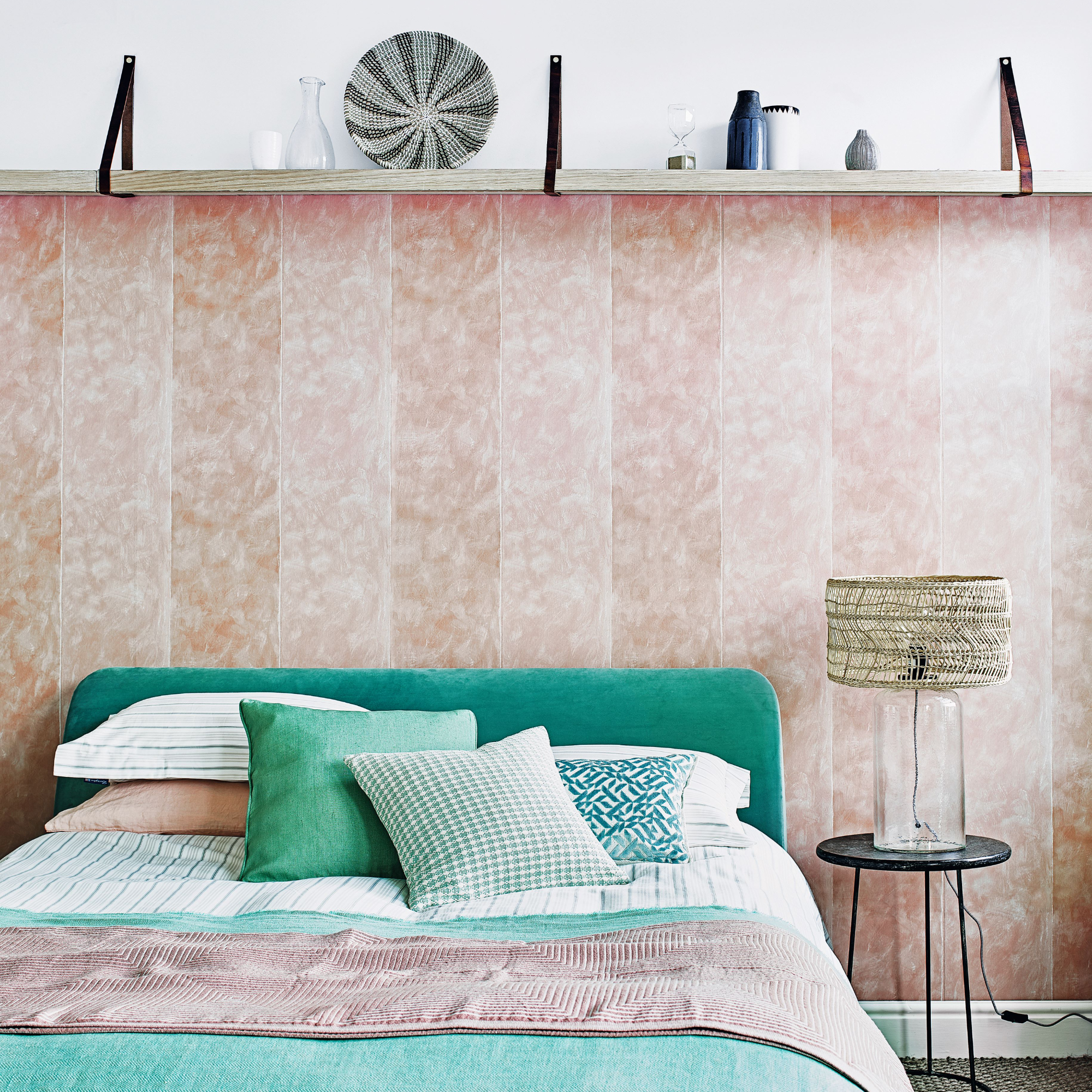
When it comes to cosy bedroom ideas, we all know and love the hygge trend of shunning the Big Light in favour of using lamps to create pools of warm light around the room.
Still, nobody wants extension leads trailing behind the bed, so be sure to pay attention to where your electrical sockets are located and decide whether you need to have any extra fitted in near the bed or dressing table.
For a scheme to work, you need to be able to plug in bedside lamps easily or dry your hair in a comfortable spot (if you're brainstorming guest bedroom ideas, this is especially important if you want to ensure guests a comfortable stay).
It's not an expensive job to have extra sockets installed by an electrician. However, it is much better to have this done – or wall lamps installed – before you decorate.
Top tip: if you're opting for wall lamps, have them run on a separate circuit to your overhead light, so you can switch them on or off separately.
8. Tuck a dressing table into an alcove
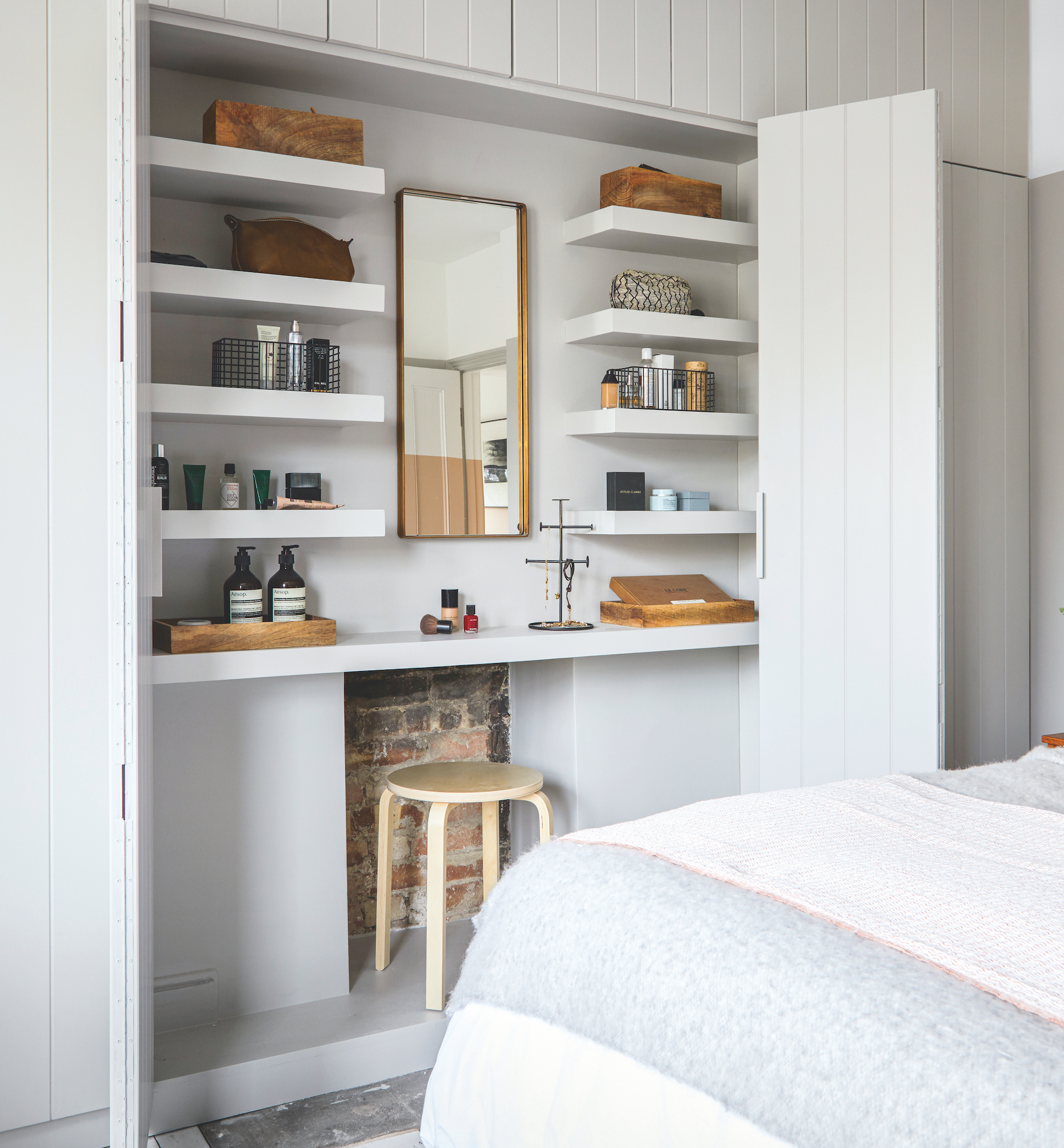
A popular place for a dressing table is within a bay window. This not only makes use of an awkwardly shaped space, it provides plenty of natural light when putting on make up.
If your bedroom doesn't have a bay window, look at whether there is an alcove you can use. In a small space, instead of a bulky piece of furniture, consider fitting a shelf where you can place perfumes or beauty paraphernalia, with a mirror on the wall and stool underneath.
Again, make sure the plug socket is nearby, so you can plug in a hairdryer.
9. Know that small doesn’t mean cramped
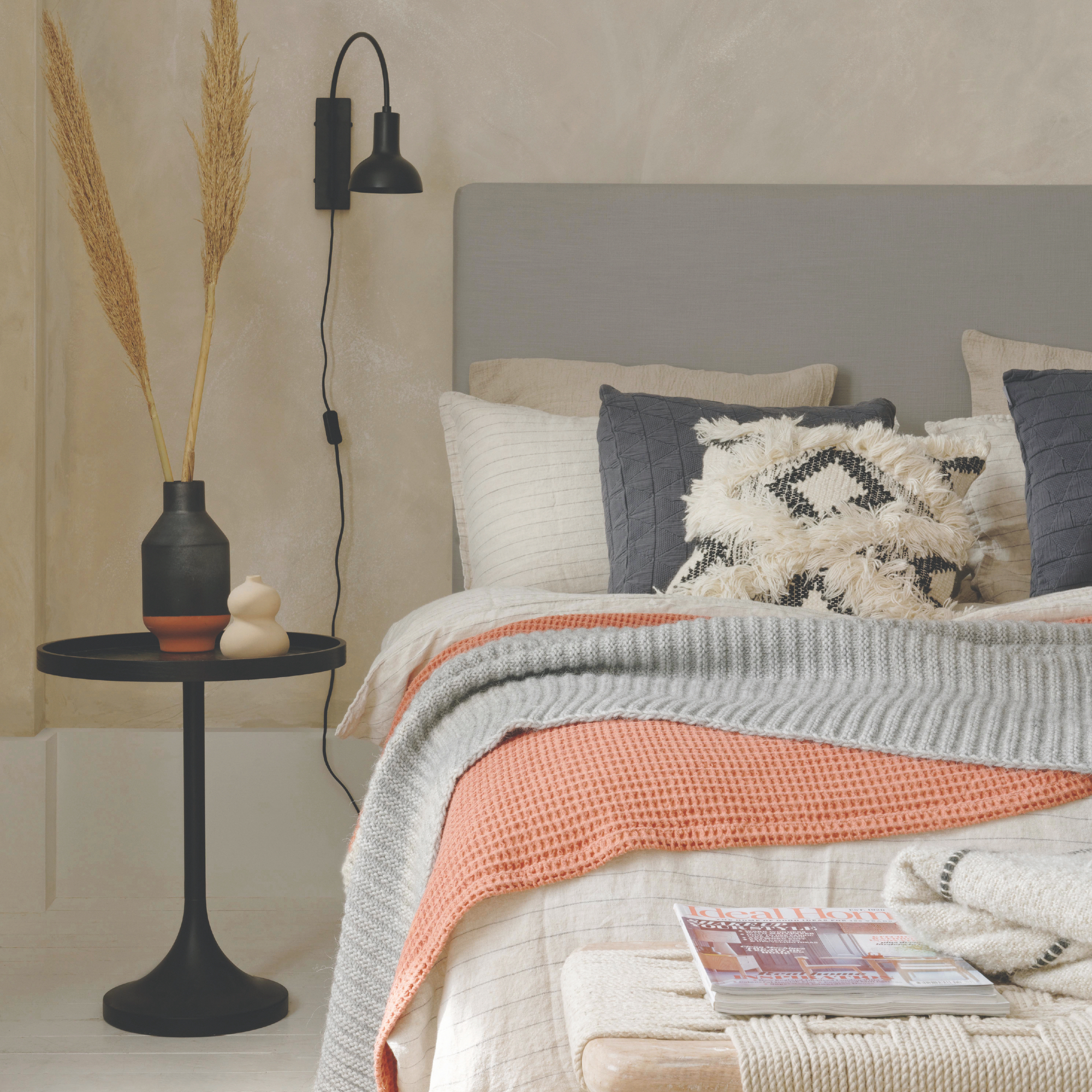
We know, we know: when it comes to figuring out how to arrange furniture in a bedroom, the temptation with a small room is to make everything in it small as well. But this shouldn't be the case.
'Beds tend to become a particular compromise but the fact is that it doesn’t matter how supportive your mattress is,' says Adam from Button & Sprung.
'If it’s too small for your needs, you’re not going to sleep well over the long term. Buy the biggest bed and mattress that the room can comfortably accommodate – it's so important to have enough space for you, and perhaps partners and family, to spread out.'
He adds that you should also make a point of buying the best mattress you can afford, as 'there is no greater luxury than quality sleep'.
Borderdale Double Mattress | from £25 at Button & Sprung
This firmer feeling mattress, made of high quality materials, gives comforting support.
'While we know there is no miracle cure for a good night’s sleep, we do know that the single most important factor is a supportive mattress,' continues Adam.
'A mattress, like a piece of clothing, should fit your unique shape and weight. It should contour to the curves of your body and align your spine in a neutral position.'
He advises you should opt for 'a naturally filled, pocket sprung mattress and you will not only have the cleanest night’s sleep, thanks to the total lack of harmful chemicals versus foam mattresses, but it will be fully recyclable at the end of its life'.
10. Save space with wall or door panel mirrors
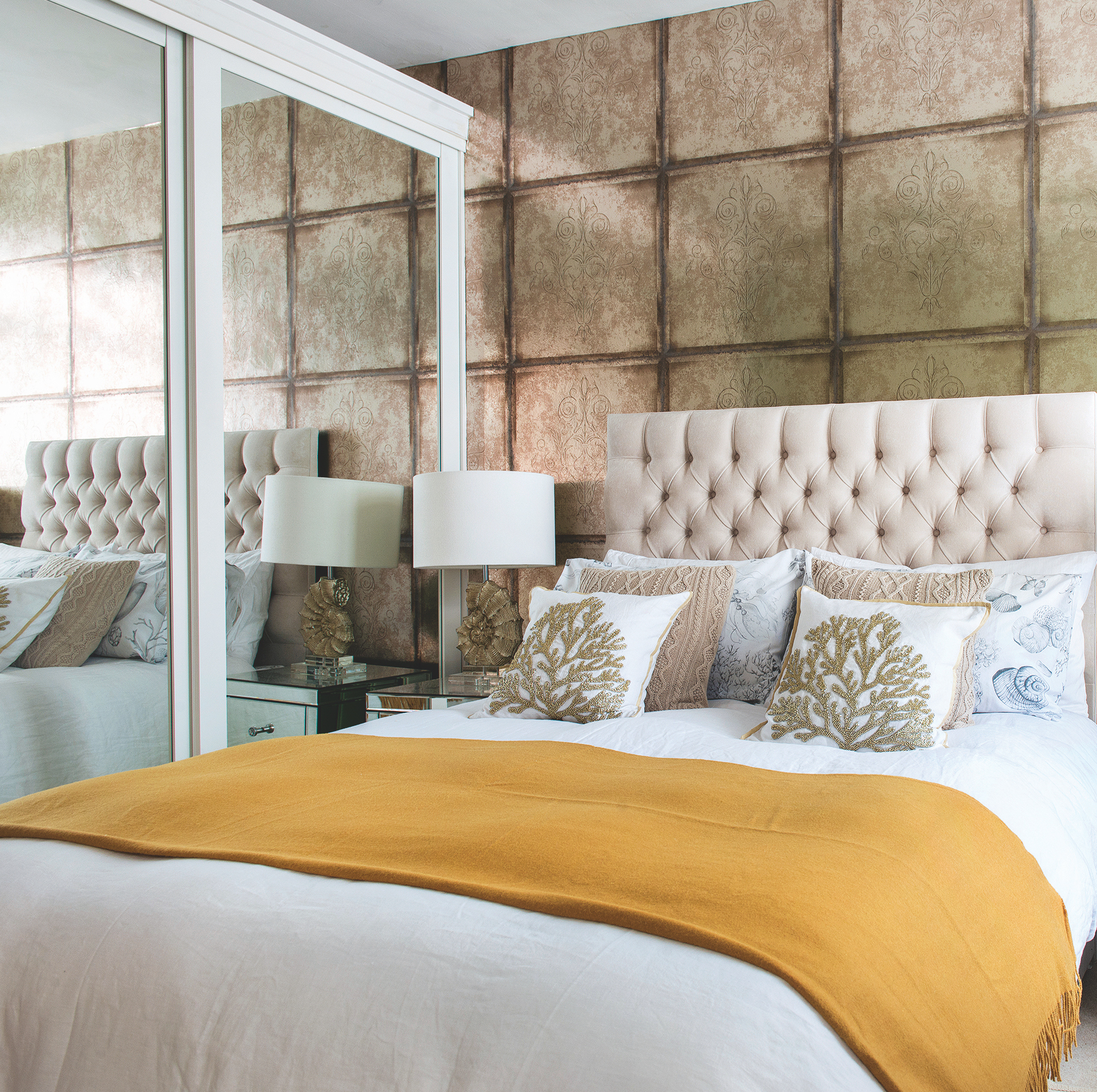
An easily overlooked item in a bedroom scheme is a full standing mirror. Yet if you want to be able to check your outfit before you head out, this is an integral part of working out how to arrange furniture in a bedroom.
A freestanding mirror that can be moved around is ideal, however, if this isn't practical, make use of available wall or wardrobe door space.
'Adding mirrors to your design will break up the solid panels, creating a more contemporary final look,' says Megan from My Fitted Wardrobe. 'Using mirrors is a great way of adding more depth to a finished scheme and they provide a practical add on.'
11. Layer your lighting
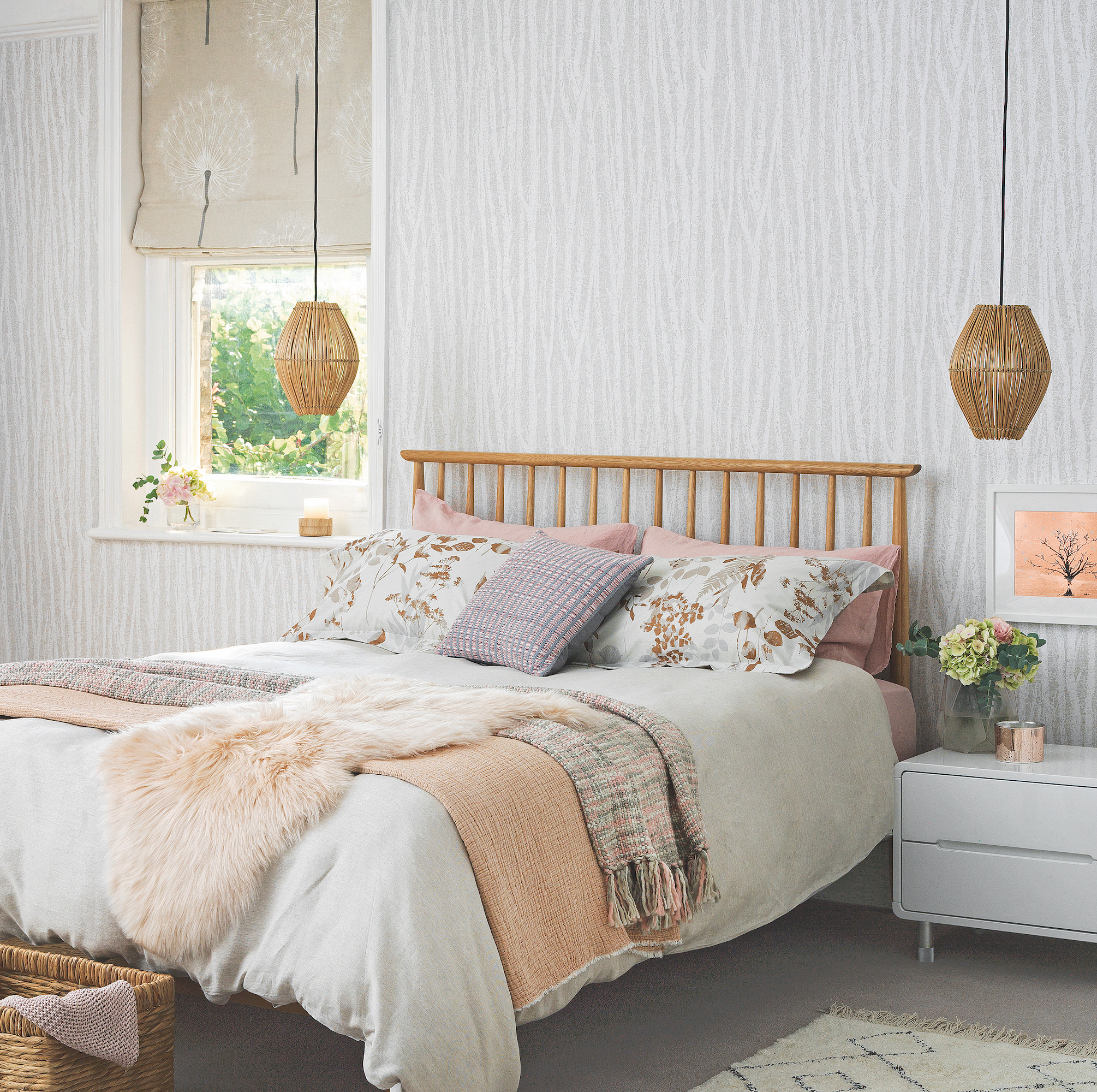
It is normal practice to layer lighting in a living room, with overhead, task and accent lamps. The same applies to bedroom lighting ideas too. It's essential to have a bright overhead light for getting ready in the evenings. As well as soft mood lighting or lamps for reading.
'Bedrooms are practical as well as relaxation spaces, so plan your lighting accordingly,' advises Peter Bowles, MD, Original BTC. 'Consider different types of light fitting, not just the light they provide. Wall-mounted lights are great space-savers in small or low ceilinged rooms and create a boutique hotel look.
'Remember to illuminate areas such as dressing tables, wardrobes and reading nooks, where more focussed task light is required.'
FAQs
How do I know where to put furniture in my bedroom?
When deciding how to arrange furniture in a bedroom, it's best to start by measuring the room and working out where the largest items, such as the bed and wardrobe will go. Once they're in place on your plan, you can work out the available space that's left and the rest should follow.
What pieces of furniture should be in a bedroom?
To know how to arrange furniture in a bedroom, you of course need to know what pieces should be included. The most important piece of furniture is obviously the bed: you're going to need somewhere to sleep! Next is the wardrobe for clothes, shoes and accessory storage.
Ideally you'll have a chest of drawers or two, a couple of bedside cabinets and a dressing table with a stool, if there is enough space.
An ottoman or blanket box can double up as a seat and storage and don't forget a laundry basket.
'You can create a cohesive space by adding an armchair or a bench, like the Rowe Velvet Bench from Laura Ashley, to your scheme if space allows,' adds Helen from Laura Ashley. 'It makes a great place for reading or journaling before bed.'
How should I arrange my bed in my bedroom?
'There has been research conducted on the position of the bed in a room and its potential impact on sleep quality, overall well-being, and even the flow of energy in a space,' says Dr Kalanit Ben-Ari.
'For example, Feng Shui is an ancient Chinese practice that emphasises the arrangement of objects to promote harmony and balance in a living space.'
Despite this, she adds that, 'while aspects of a person's environment, including their bedroom and bed placement, may impact their mood or well-being to some extent, it would be overly simplistic to draw direct conclusions about personality solely based on the position of the bed.'
Stephany Aubrey, brand specialist at Zinus, agrees, stressing that it's vital you pay attention to the bed’s surroundings.
'Enhancing the beauty of your bed is not just about the bed itself but also about creating a visually cohesive environment around it,' she says.
'Carefully selected side tables and an accent chair will help to ground the bed; making the space feel intentional.'
Now that you know how to arrange furniture in a bedroom, you can check out all the latest bedroom trends to help you get started on the next bit: decorating!
Whether you go paint or wallpaper, curtains or blinds, carpets or rugs, though, just make sure you pick a style that suits you – and helps you to feel calm and relaxed above all else.
Get the Ideal Home Newsletter
Sign up to our newsletter for style and decor inspiration, house makeovers, project advice and more.
Jacky Parker is a freelance interiors & lifestyle journalist, specialising in modern interiors, design and eco living. She has written for Future’s interior magazines and websites including Livingetc, Homes & Gardens, Country Homes & Interiors and Ideal Home for over fifteen years, both as a freelance contributor and inhouse, with stints as Acting Digital Editor, Livingetc and Acting Style Content Editor, Country Homes & Interiors. Her work also features in national and international publications including Sunday Times Style, Telegraph Stella, The Guardian, Grand Designs, House Beautiful and more. With years of experience in the industry Jacky is privy to the insider view and the go-to places for interior inspiration and design-savvy décor.
- Kayleigh DrayActing Content Editor
-
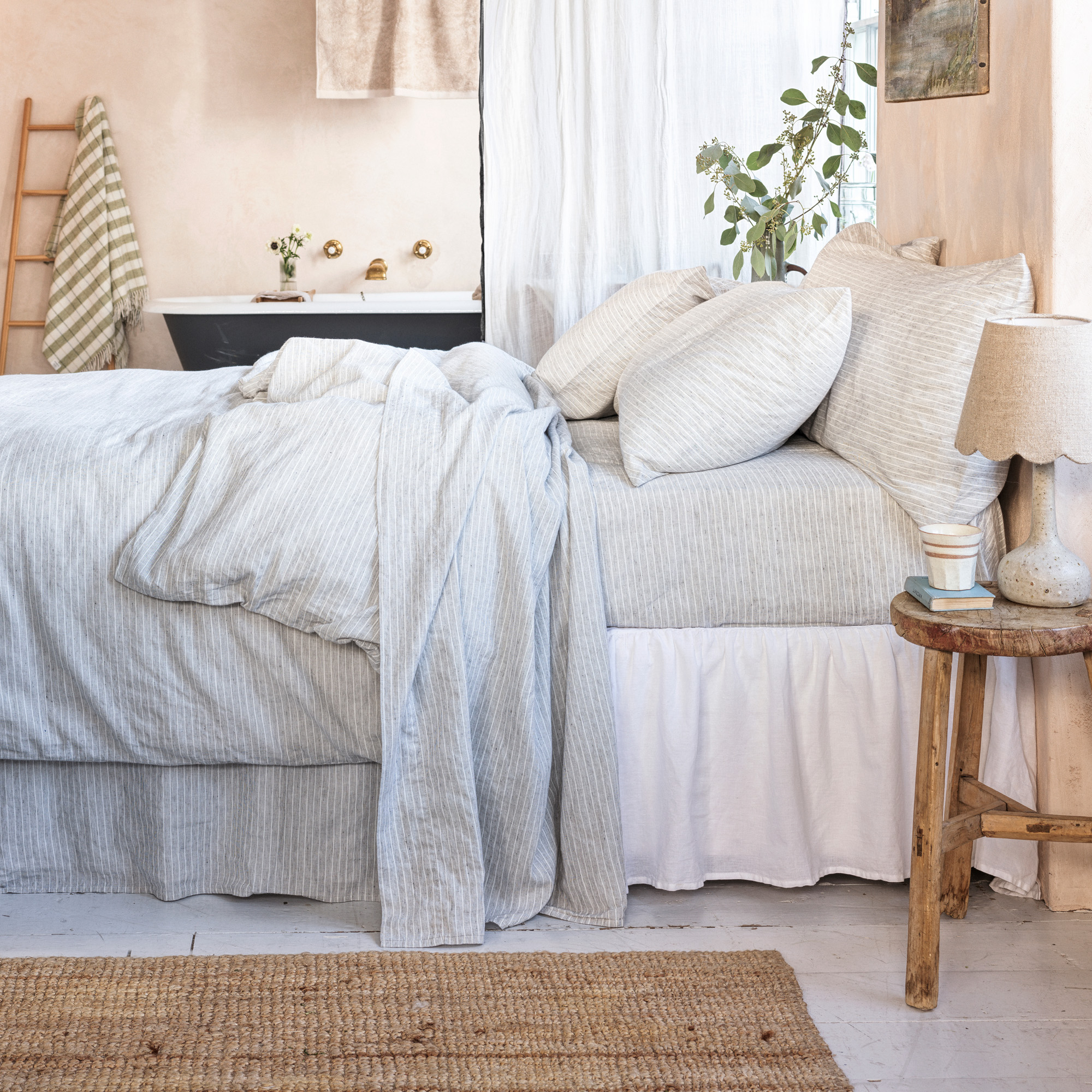 I swore I would never choose a flat sheet over a fitted sheet – but this advice from a bedding expert just changed my mind
I swore I would never choose a flat sheet over a fitted sheet – but this advice from a bedding expert just changed my mindWhy I'm now a 'flat sheet' convert
By Amy Lockwood
-
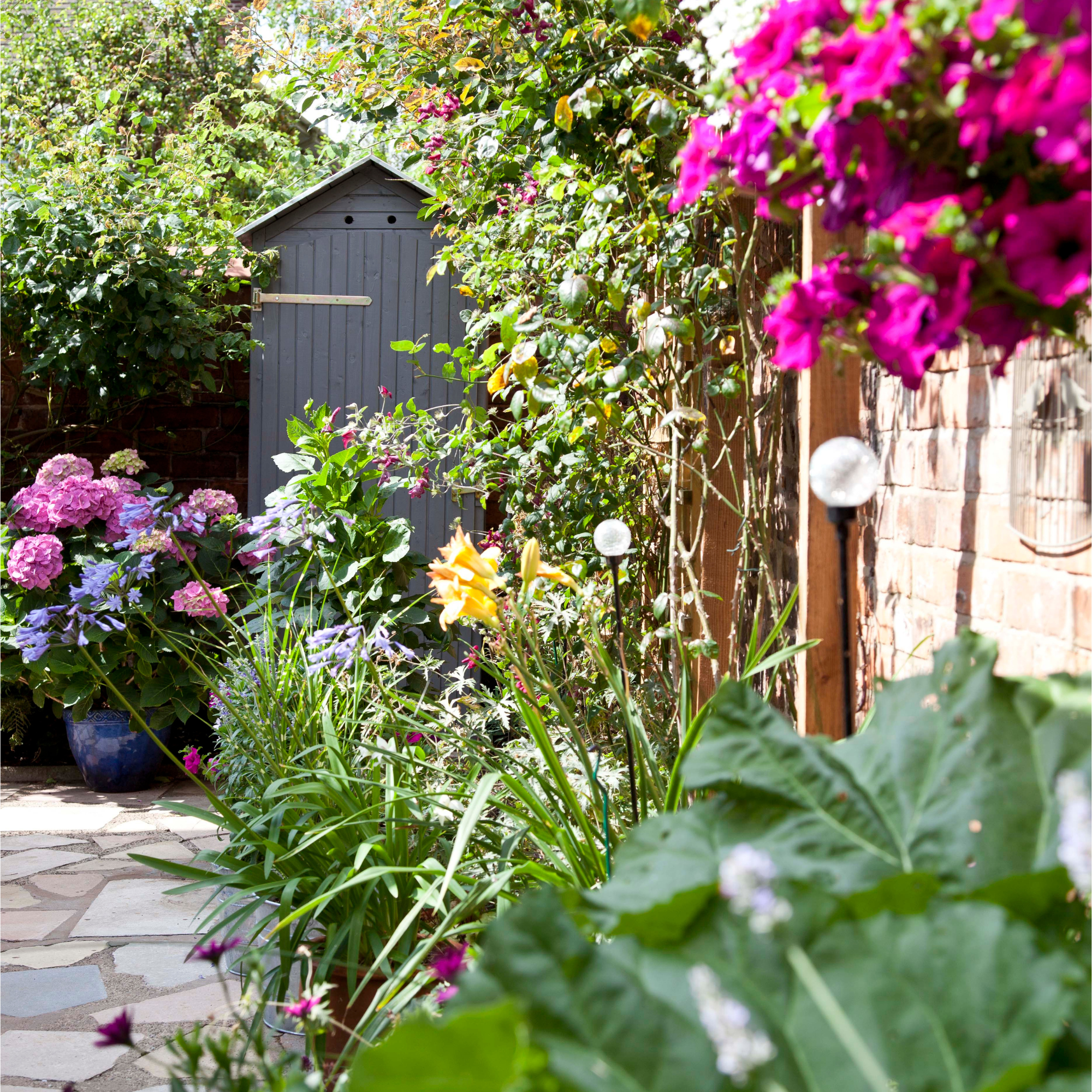 Small garden shed ideas – 5 ways to make the most of this garden building without compromising on space
Small garden shed ideas – 5 ways to make the most of this garden building without compromising on spaceThere's a shed for every garden size – even the tiniest ones!
By Sophie King
-
 My mum introduced me to Nancy Birtwhistle’s ‘Pure Magic’ recipe - now I don’t think I’ll need to buy another cleaning product ever again
My mum introduced me to Nancy Birtwhistle’s ‘Pure Magic’ recipe - now I don’t think I’ll need to buy another cleaning product ever againI live in a hard water area, and it's the ONLY thing that's removed the limescale in my toilet
By Lauren Bradbury
